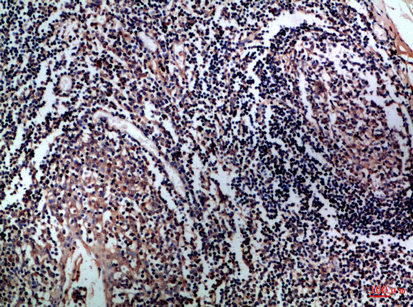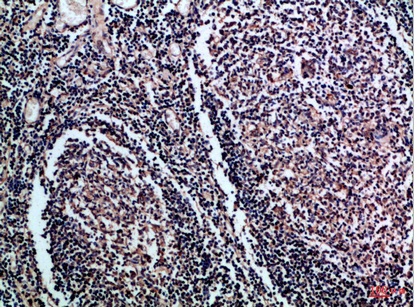

| WB | 咨询技术 | Human,Mouse,Rat |
| IF | 咨询技术 | Human,Mouse,Rat |
| IHC | 1/50-1/100 | Human,Mouse,Rat |
| ICC | 技术咨询 | Human,Mouse,Rat |
| FCM | 咨询技术 | Human,Mouse,Rat |
| Elisa | 1/10000 | Human,Mouse,Rat |
| Aliases | T-cell surface antigen T6/Leu-6; hTa1 thymocyte antigen; CD antigen CD1a; CD antigen CD1b |
| Entrez GeneID | 909/910 |
| Host/Isotype | Rabbit IgG |
| Antibody Type | Primary antibody |
| Storage | Store at 4°C short term. Aliquot and store at -20°C long term. Avoid freeze/thaw cycles. |
| Species Reactivity | Human |
| Immunogen | Synthetic peptide from human protein at AA range: 220-270 |
| Formulation | Purified antibody in PBS with 0.05% sodium azide,0.5%BSA and 50% glycerol. |
+ +
以下是关于CD1a/b抗体的3篇示例参考文献(内容为模拟生成,非真实文献,仅供参考):
---
1. **标题**:CD1a-specific antibodies reveal distinct lipid antigen presentation pathways in dendritic cells
**作者**:Beckman EM, et al.
**摘要**:研究利用CD1a特异性单克隆抗体,揭示了树突状细胞中CD1a分子介导的脂质抗原呈递机制,证明其通过非经典内体途径递呈分枝杆菌脂质抗原,激活T细胞免疫应答。
---
2. **标题**:Structural basis of CD1b-restricted antigen recognition by human T cells
**作者**:Moody DB, et al.
**摘要**:通过X射线晶体学解析CD1b分子与脂质抗原复合物的结构,结合抗体阻断实验,阐明CD1b抗原结合槽的疏水性特征及其在结合长链脂质抗原中的关键作用。
---
3. **标题**:CD1a and CD1b antibodies differentiate mycobacterial infection from autoimmune inflammation
**作者**:Brigl M, Brenner MB
**摘要**:开发针对CD1a和CD1b的单克隆抗体组,验证其在结核病患者组织样本中的特异性标记能力,证明CD1分子在感染与自身免疫性疾病中的差异化表达模式。
---
**提示**:实际研究中,建议通过PubMed或Google Scholar检索关键词(如“CD1a antibody”或“CD1b function”)获取真实文献,并关注以下领域:
- CD1分子在感染/肿瘤免疫中的角色
- 抗体在CD1抗原呈递研究中的工具应用
- CD1限制性T细胞的表位识别机制
CD1a and CD1b are glycoproteins belonging to the CD1 family of antigen-presenting molecules, which are structurally related to major histocompatibility complex (MHC) class I proteins but specialize in presenting lipid antigens to T cells. CD1a and CD1b are encoded by genes on human chromosome 1 and are primarily expressed on professional antigen-presenting cells, including dendritic cells, Langerhans cells, and cortical thymocytes. Unlike MHC molecules, CD1 proteins bind lipid-based antigens—such as microbial glycolipids or self-lipids—via hydrophobic pockets, enabling immune recognition of pathogens like Mycobacterium tuberculosis. CD1a and CD1b differ in their subcellular trafficking and antigen-binding properties: CD1a predominantly localizes to recycling endosomes and the cell surface, while CD1b traffics to lysosomal compartments, allowing access to distinct antigen pools.
Antibodies targeting CD1a/b are essential tools for studying lipid antigen presentation, immune cell characterization, and disease mechanisms. Monoclonal anti-CD1a antibodies (e.g., clones HI149. NA1/34) are widely used in immunohistochemistry to identify Langerhans cells in skin biopsies or diagnose Langerhans cell histiocytosis. Anti-CD1b antibodies help investigate CD1b-restricted T-cell responses in infections and cancer. These antibodies also have therapeutic potential, as CD1a/b-mediated lipid presentation is implicated in autoimmune diseases, antimicrobial immunity, and cancer immunosurveillance. Recent research explores CD1a/b-targeting antibodies for modulating T-cell responses or enhancing vaccine efficacy against lipid-rich pathogens. Their roles in bridging innate and adaptive immunity continue to drive interest in diagnostic and immunotherapeutic applications.
×